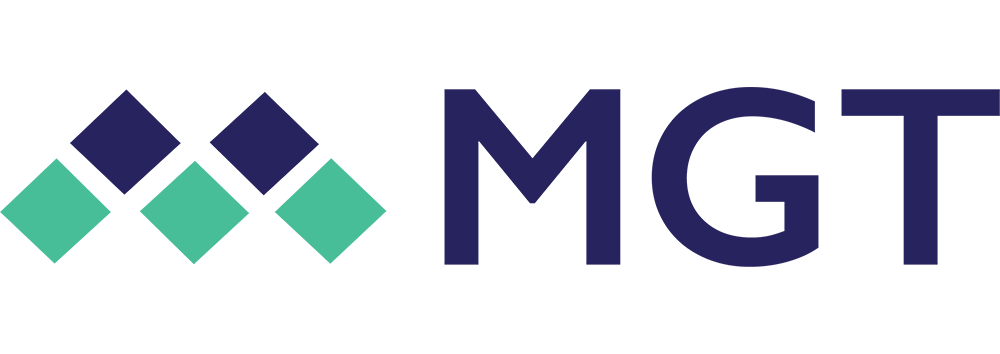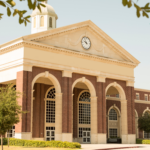During these unprecedented times, new leaders in K-12 and higher education are acting strategically on how to increase organizational effectiveness from day one. At the outset, the goal is to create a roadmap for the future with a clear vision and strategy that faculty, staff, students, and communities can embrace and champion.
Gaining institutional buy-in
An effective way to achieve support from your organization and community is by being transparent, and helping people understand what the vision is for the future. Leaders have the responsibility to answer the “why” to help people understand what we are ultimately trying to achieve to increase organizational effectiveness. When people acknowledge the reasons for change, they can adapt more cohesively because they know where they fit in ― that applies to students, faculty, staff, board members, and community members. Everyone wants to realize the role they play and the opportunities available moving forward.
Building flexibility for staff retention
As we emerge from COVID-19, it’s important to create opportunities for staff to grow and thrive during major organizational changes. Many leaders realize their staff and faculty are fatigued after several years of assuming additional responsibilities and balancing both family and work responsibilities during the pandemic. Flexibility in the work environment is especially important now, creating an environment of respect and trust for faculty and staff to do their jobs to further support student success.
We don’t know who will grow and thrive in a changing environment. Some people may decide that it’s time to move on from an organization and that’s okay. At the same time, there may be people in your organization that can advance and flourish with the opportunities that arise during organizational change.
Faculty and staff should believe in the mission of the organization and think they can be successful in its future direction. People need the opportunity to be a star. If they’re not well-situated to succeed, then as an employer and leaders, we need to help position people so that everyone can thrive.
Gaining speed in transformational change
Many leaders struggle with how to balance the need for large, transformational change with speed and agility. Educational institutions, whether it’s K-12 or higher ed, have historically been slow to change or evolve quickly. Transformational change requires significant attention, focus, and institutional buy-in.
Being poised for the future and managing organizational change is challenging, especially amid the national issues facing education. We are helping institutions overcome financial constraints; adapting to the evolving, diverse enrollment landscape; and addressing advanced technology, whether it’s digital transformation or cybersecurity. These are just a few of the major drivers of organizational change within education.
Creating high-quality learning environments
As we reimagine K-12 and higher education, we are not only focused on being accessible to students, but on providing high-quality learning environments wherever students are, and wherever they come to us from ― around the country or the world.
We are finding that students have a broad span of skill sets and interests. Whether students are interested in technical trade fields or graduate education, we are exploring ways to deliver high-quality services to best meet the needs of our students and our communities in relevant ways. Some campuses are focused on expanding inclusive learning opportunities while others are introducing new interdisciplinary and certificate programs.
Supporting students seeking affordable education options
Increasingly, students are looking for affordable options to receive the appropriate education to enter the workforce, whether that’s a technical certification or academic education that requires a graduate school degree. Students want to achieve the best education at the best cost, recognizing that being burdened with student loan debt can hold them back as they begin their early adulthood and professional careers. Students are being more strategic in ensuring that they have the right credentials, training, and experience through internships, work-study programs, and other employment opportunities, while balancing how much student loan debt is incurred.
Advancing financial literacy
Too many students struggle with financial literacy in high school and higher education. We need to do more to educate students on how to prepare for their future financial well-being. Financial education includes understanding the concepts of wise spending, saving, budgeting, financial planning, and investing, so they can make sound economic decisions with greater confidence.
Given recent government initiatives for potential forgiveness of student loan debt, many students in their late 20s and early 30s who are still paying student loan debt or recently paid it off, say, “I didn’t know what I was signing up for when I took out those loans as an 18-year-old college student. If I could do it again, I would do it differently.”
According to Bankrate’s student loans survey, more than half (59%) of adult respondents with student loans said they still would have attended college but done something differently to curtail how much debt they took on, such as applying for more scholarships (23%), working or working more while they were in school (20%), getting a degree in a different field (19%), attending a cheaper school (17%), going to community college (15%) or doing something else differently (5%). Financial literacy education starts early, in the home and schools.
Helping students on-ramp to the economy
Our educational system also has a responsibility to collaborate with students, local communities and businesses to invest in the workforce of the future. Preparing students now helps them secure a sound career path and income trajectory, contribute to a stronger workforce, and position industry for success in the future.
Where I live, there is an institution that is prepping students for internships at a local music industry business. Those students are learning how to be high-quality professionals so when they graduate they’re able to secure a good job. The industry is learning from students about how they need to be prepared and aligned with the next generation. It’s a two-way street with numerous benefits for all. Partnerships between educational institutions and businesses can help change the lives of students by offering internships, mentorships, and work-study programs as students prepare to graduate from universities, community colleges, and technical institutions. We want to make sure that we’re aligning and investing in all levels of education.
Staffing for student success
Our research shows that K-12 and higher education professionals continue to overcome the challenges presented by the pandemic. In addition to working long hours, often staff and faculty are performing roles that are outside of their professional training, whether that’s mentoring students or providing crisis-care intervention, as well as balancing home and work responsibilities.
According to a recent Rand report, stress topped the reason why public school teachers quit, even before the pandemic. Key findings in the report noted that for some teachers, COVID-19 seemed to have exacerbated what were high stress levels pre-pandemic by forcing teachers to work more hours and navigate an unfamiliar remote learning environment. Moreover, the workforce shortages in K-12, not only include teachers, but bus drivers, custodians, and support personnel.
Additionally, as reported in Higher Ed, a recent American Association of University President’s (AAUP) study showed that real average salaries, when adjusted for inflation, decreased five percent year-over-year, representing the greatest decrease in real-wage growth since 1979 to 1980.
At MGT, we are working with educational institutions to help build flexible, sustainable models for high-quality student education while creating ways to retain the best and brightest of staff and faculty through variable work environments and compensation programs to help people balance work, family, and childcare responsibilities.
We often pair what we learn at a specific institution and compare that to what’s happening nationally. We look at the data and trends to make sure that we’re making recommendations to a school district, college, or university that are not only grounded in the mission, vision, values, and strategic plan of that organization, but also in the context of what’s happening nationally through data-driven research and analysis.
Maximizing resources for student success
Resource maximization means taking a hard look at your organization and making strategic decisions to improve effectiveness and efficiency, with effectiveness being more important than efficiency. Many people think that resource maximization revolves around efficiency or cutting costs, but efficiency without effectiveness is not practical or helpful to organizations. If an organization is not staffed correctly or investing in the right assets, the goals for student success are diminished.
Typically, the list of unmet needs and goals in K-12 and higher education is long and there are not enough people or resources to get that work done. Resource maximization encourages rethinking the way we work to be more effective. Organizational effectiveness studies help identify ways to be more collaborative and productive in achieving goals, which sometimes naturally leads to greater efficiencies and better services.
Leading amid turbulent times
It’s a challenging time to lead educational institutions. There are many competing priorities and new rules, policies, and procedures. At MGT, our best work is done when we can help a client through a major transformational change and identify ways to continue to partner through the transition.
We recognize that our work in comprehensive organizational reviews, strategic plans, and facilities master plans doesn’t end when we issue a report. We are always there to help a client see a project through to the end, especially if they don’t have the resources on the ground. We value being part of the strategic conversations and implementation process to help new leaders achieve their goals within the timelines they envision for greater student success.
MGT has experience at all levels in higher education, working with colleges and universities to serve as an objective third party in leading organizational reviews and providing feedback that is actionable and designed to elevate student success. Our team has served in different roles on campuses: we have led projects all over the country to explore organizational structures, share exceptional frameworks and ensure positions are well-established based on the needs of the organization to lead the college or university.








